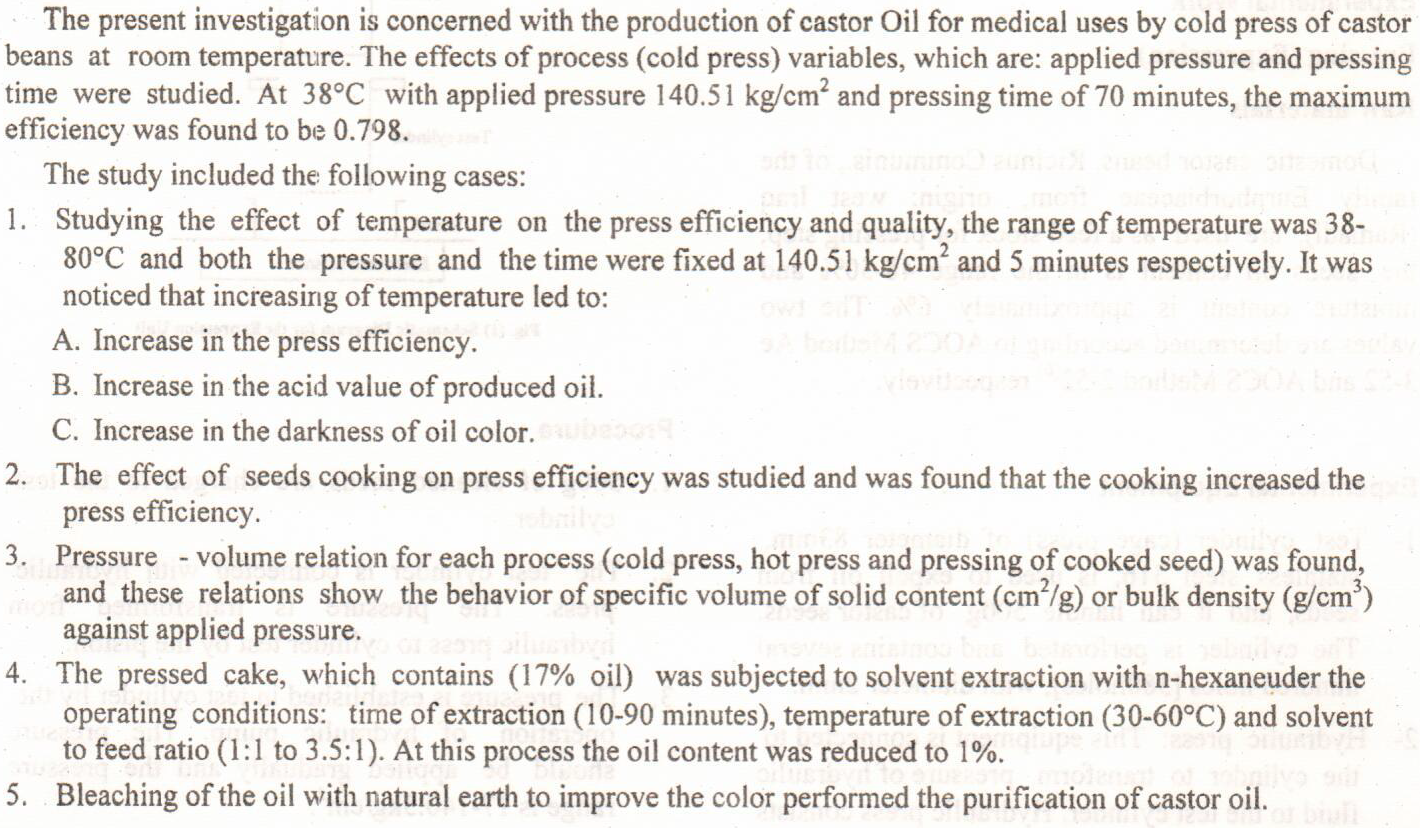
This experiment was performed to investigate the influence of different oils in the diets of laying quail on their egg quality characteristics. One hundred and twenty 7-wk old Japanese quails (Coturnix coturnix japonica) were allocated to four groups with three replicates containing 10 quail each (30 quail per each treatment group). They were fed for 13 weeks (including one week of adaptation period) on diets containing 3% oil from different sources, viz. either sunflower (T1), linseed (T2), maize (T3), or fish oil (T4). Inclusion the diet of laying quail with fish oil (T4) and maize oil (T2) resulted in significant increase with respect to egg weight, yolk weight, albumen weight, yolk diameter, yolk height, albumen diameter, albumen height
... Show More (5)
(5)
 (4)
(4)
This experiment was performed to investigate the influence of different oils in the diets of laying quail on their egg quality characteristics. One hundred and twenty 7-week-old Japanese quails (Coturnix coturnix japonica) were allocated to four groups with three replicates containing 10 quail each (30 quail per treatment group). They were fed for 13 weeks (including one week of adaptation period) on diets containing 3% oil from different sources, viz., sunflower (T1), linseed (T2), maize (T3), or fish oil (T4). Inclusion of the diet of laying quail with fish oil (T4) and maize oil (T2) resulted in a significant increase with respect to egg weight, yolk weight, albumen weight, yolk diameter, yolk height, albumen diameter, albumen height, sh
... Show More (5)
(5)
 (4)
(4)
The use of the entrance diffraction hexagon continuous improvement of operations in order to achieve the rationalization of activities, costs and efficiency in the use of available resources and reduce the incidence of damage and waste and recycling, as the accounting information system does not meet the surface production processes oil fields cost management requirements in the measurement and evaluation of the costs of each activity and development of indicators to evaluate the efficiency and effectiveness of production processes and to cover the shortcomings of currently approved by the company so cost accounting system has Find addressed the use of strategic cost management techniques, including the entrance diffraction hexagon for c
... Show More
Abstract
Despite the fact of the importance and effectiveness of supporting the pricing policy for agriculture sector in Iraq, but this policy has stopped in supporting those agriculture production needs, and it was confined to support the final product only, and supporting the strategic corps exclusively after the U.S. Invasion in 2003, but after 2008 the state has returned to support some of this policy activities through providing financial loans through the agricultural initiative campaign, with trillions of iraqi dinars without any use, also providing support to some of the agricultural production needs such as fertilizers , tractors and agricultural combines, in addition supporting the pricing policy for the
... Show More (1)
(1)
Production of the steroidal saponin digitonin in multiplied shoots of Digitalis purpurea , (var. Excelsior Mixed) has been achieved in vitro by two experiments. In the experiment 1, shoot tips ( 1cm length ) explants from the sterilized seedlings were excised and cultured on MS medium ( Murashige and Skoog medium) supplemented with 0.5 mg/L TDZ (thidiazuron) and cholesterol at the concentrations 0.0, 0.1, 0.3, 0.5, 1.0, 1.5, 2.0 or 4.0 mg/L. After 45 day, results showed that the treatment with 0.5 mg/L TDZ and 2.0mg/L cholesterol had a positive effected on increasing the dry weight of multiplied shoots and their production of digitonin when compared with other treatments, where this treatment gave 2
... Show More (1)
(1)
The aim of this research is to measure and analyze the gap between the actual reality and the requirements of the environmental management system in the middle refineries company/refinery cycle according to ISO14001: 2015, as well as to measure the availability of a clean production strategy and test the relationship and impact between the availability of the requirements of the standard and a clean production strategy for the actual reality in the company.
The research problem was determined by the extent to which the requirements of the environmental management system are applied according to ISO14001: 2015 in the middle refineries company? To what extent are the required clean production strategies ava
... Show More (1)
(1)
In this work, the rate of charge transfer (CT) reaction at the N3-ZnS interface was calculated using a quantitative computational model to evaluate the efficiency of N3-ZnS heterojunction dye-sensitized solar cell devices using different types of solvents. This work discussed the influence of the effective driving energy force on the charge transport rate and performance of N3-ZnS devices with various solvents based on a donor-acceptor model. A solar cell model was used to study the optical efficiency when changing some of its parameters, such as the type of material and the thickness of the film, as they are important factors influencing the quality of the solar cell. It was found that the transition energy varies with different so
... Show MoreIn a resource-limited world, there is an urgent need to develop new economic models, from the traditional unsustainable industrial model of product consumption and disposal, to a new model based on the concepts of sustainability in its comprehensive sense, the so-called circular economy, using fewer resources in manufacturing processes and changing practices in product disposal to waste, by removing its use, recycling and manufacturing to start another manufacturing process. In an era of intense competition in domestic and global markets, the importance of the circular economy is highlighted in its ability to strengthen the competitiveness of enterprises in those markets, by reducing the cost and increasing the quality of the pro
... Show More (2)
(2)
